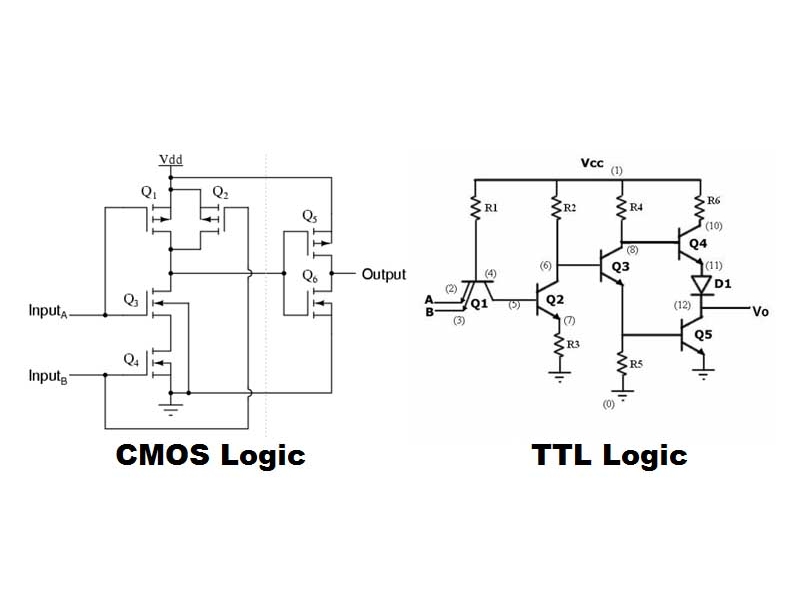CMOS (Complementary Metal Oxide Semiconductor) first came about in 1963, and essentially replaced TTL Technology (Transistor Transistor Logic). The problem with TTL Logic was that it took power to hold a line high. Whereas CMOS uses virtually no power to hold a high or low state (although it is slower to operate); power is instead consumed when switching between the states. In an oscillator, the output is high for half the cycle and low for the other half, meaning for any 1 second, it is high for only 0.5 seconds. In reality, the output switches from high to low and back twice for every clock cycle, that means a 26MHz oscillator switches 42million times a second.
By the 1990’s CMOS had replaced TTL as the most common form of logic and TTL was obviously going to become obsolete. Along the journey to its dominance, CMOS went through a few iterations. Firstly, HCMOS, the High Speed version, and ACMOS, the Advance version. Additionally, back in the 90’s the most common supply voltage was still 5V, but 3.3V was the new future (a bit like 1.8V is today), and this inevitably led to Low Voltage CMOS, LVCMOS.
Back then, it was important to differentiate between these different CMOS types because they all had different voltage levels, different switching speeds, and they could drive different amounts of power to the input of the next device. Therefore, a design engineer had to match the output of an oscillator to the input of the next stage of their product. Thankfully, the world is simpler now. Everything is compatible and they can all be classed as just CMOS; It’s no longer helpful to differentiate between all the different options. For that reason we just say “CMOS output” and avoid any confusion.
Of course, life would be simple if CMOS was the only output option… However, alternatives to exist: for single output oscillators this includes: clipped sine wave or sine wave, and for dual output oscillators: LVPECL, LVDS or occasionally HSCL. That’s another article…
picture courtesy: Quelle: Circuit Digest.com
